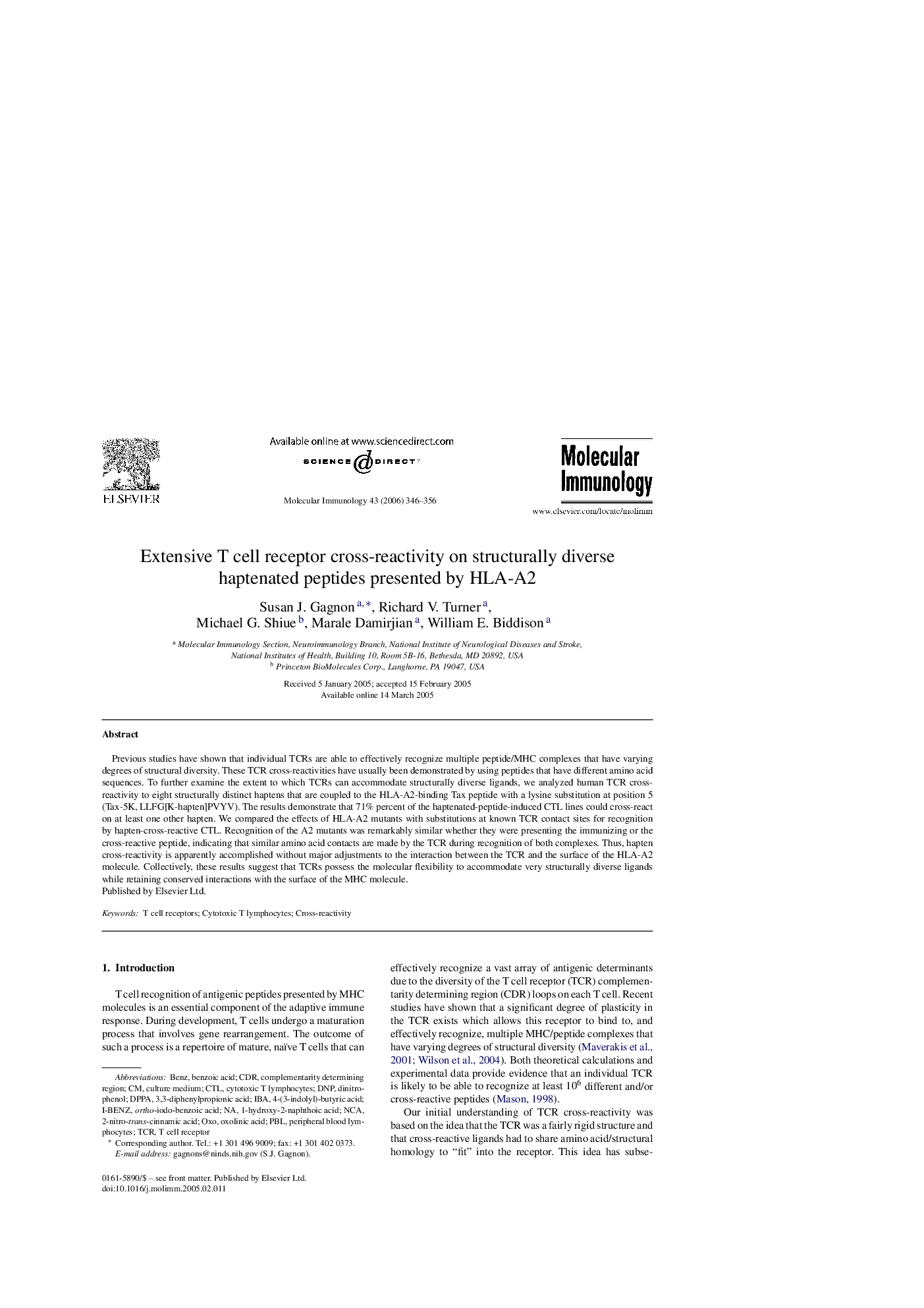| Article ID | Journal | Published Year | Pages | File Type |
|---|---|---|---|---|
| 2833425 | Molecular Immunology | 2006 | 11 Pages |
Previous studies have shown that individual TCRs are able to effectively recognize multiple peptide/MHC complexes that have varying degrees of structural diversity. These TCR cross-reactivities have usually been demonstrated by using peptides that have different amino acid sequences. To further examine the extent to which TCRs can accommodate structurally diverse ligands, we analyzed human TCR cross-reactivity to eight structurally distinct haptens that are coupled to the HLA-A2-binding Tax peptide with a lysine substitution at position 5 (Tax-5K, LLFG[K-hapten]PVYV). The results demonstrate that 71% percent of the haptenated-peptide-induced CTL lines could cross-react on at least one other hapten. We compared the effects of HLA-A2 mutants with substitutions at known TCR contact sites for recognition by hapten-cross-reactive CTL. Recognition of the A2 mutants was remarkably similar whether they were presenting the immunizing or the cross-reactive peptide, indicating that similar amino acid contacts are made by the TCR during recognition of both complexes. Thus, hapten cross-reactivity is apparently accomplished without major adjustments to the interaction between the TCR and the surface of the HLA-A2 molecule. Collectively, these results suggest that TCRs possess the molecular flexibility to accommodate very structurally diverse ligands while retaining conserved interactions with the surface of the MHC molecule.
